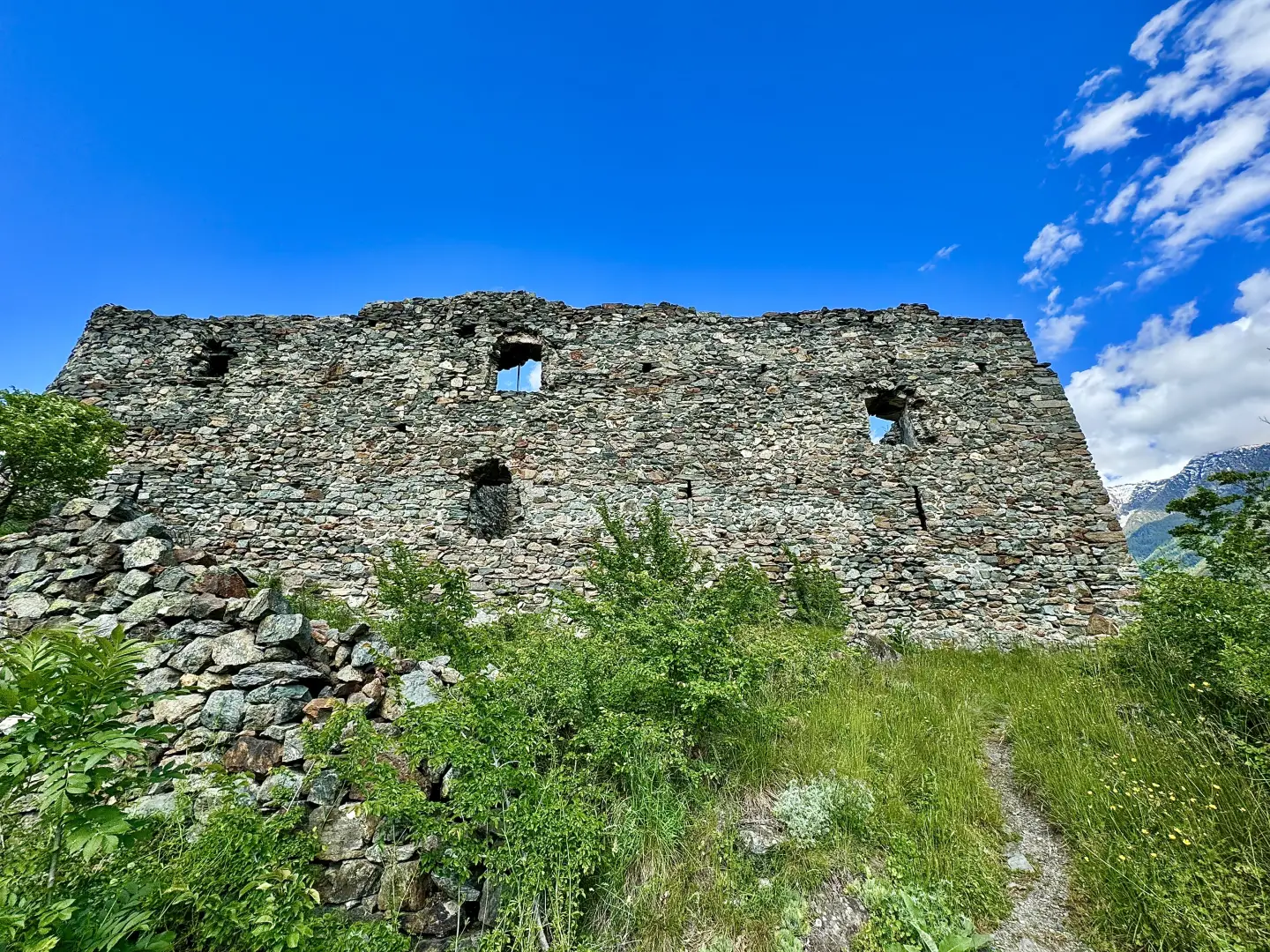Villa Castle

Access
The castle is located high above the village of Challand-Saint-Victor, along the regional road connecting Verrès to Val d'Ayas. The ruins can easily be seen from the valley floor, but the area is not open for visits due to the danger of collapse. Direct access is not permitted, although it is possible to admire it from a distance from the outskirts of the village or from viewpoints along the road up the valley.
Introduction
The castle of Ville, also known as the castle of Villa-Challand, stands on a hill overlooking the village of Challand-Saint-Victor, in Val d'Ayas. Its strategic position, a short distance from Verrès, allowed it to control the road up the valley towards Valais, making it one of the oldest and most significant manors in Valle d'Aosta. Today only ruins remain of the castle, which nevertheless retain a strong historical value and testify to the importance of the Challant family, to whom the manor was closely linked.
Description
The castle was built in the early 13th century, when Count Thomas I of Savoy granted Boson II, Viscount of Aosta, the fief of Villa-Challand, authorising him to build a castle there. From then on, the lineage took on the appellation 'of Challant', a distinctive sign of their lordship. During the 13th and 14th centuries, the castle was the residence of various members of the family, including Ebalo I of Challant, also known as Ebalo Magno, who enlarged the structure, giving it a chapel and additional residential buildings. Its position allowed visual connections with other fortified sites in the valley, such as the Tower of Bonot and the castle of Graines, as well as with the valley floor where the castle of Verrès would later be built.
In the 15th century, during the hereditary disputes involving Catherine of Challant and other members of the family, the castle of Ville became the scene of disputes and was fortified. It is said that in 1453 it was garrisoned by dozens of armigers, a sign of its strategic importance even at a time of dynastic strife. With the defeat of Catherine, the castle entered a phase of abandonment: no longer inhabited, it began to decay and was used as a quarry for materials for other constructions, contributing to its rapid deterioration.
Today, the ruins are not accessible to the public for security reasons, but sections of the perimeter walls, remains of windows and loopholes, the cistern and some traces of frescoes can still be seen, bearing witness to the past prestige of the complex. Despite its state of ruin, the castle of Ville remains a point of interest for understanding the evolution of medieval architecture in Valle d'Aosta and for the role it played in the history of the Challant family, protagonists in the political and feudal life of the region.